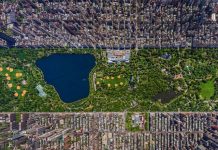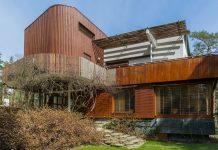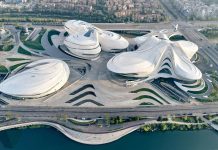The route of ideas and idioms is not a one-way journey, but (ōfuku, Japanese) – round trip. In contemporary Japanese architecture, we can find a number of interesting examples of re- consideration of Aalto models in Japan. In Fukushima prefecture, on the slope of Bandai mountain, there is the hotel Hotelliaalto designed as a collaboration project of Yoshihiro Masuko, Toshikazu Kawai, and Shintaro Otake.
The responsive character of this project definitely fits the frame of what people mean by Nordic architecture often characterized by such traits as simplicity and functionality packed with the integration of building space with communi- cating landscapes: in our case, the hotel sections differently “communicate” with forest and mountain sides of the complex.
However, the hotel design could not be understood as a simple translation of Aalto idioms, but an implementation of the meaningful environmental design incorporating the models and patterns from both Nordic rational modernism and traditional Japanese villa and searching for a mutual response between the architectural project, environ- ment and human beings (where the links to both the particular individuals and the society at large are of equal importance).
The latter thesis may be nicely illustrated by Aalto’s project for Jyväskylä University, where the authors were searching for a way of implementing the mean- ingful interaction of the university buildings with Jyväskylä city by “integrating the university into the urban fabric not only as an academic facility, but as a public and intellectual center” (Fiederer, 2016). New university buildings (such as Agora Center designed by Arto Sipinen and built in 2000) follow the Aalto’s approach of finding a harmony between its function and dialogue with the environment.
In addition to the above-mentioned Hotelliaalto project, in contemporary Japanese archi- tecture we can find other clear references to Aalto’s works. A perfect example is the Iwaki museum and library of picture books (2005) (Emily, 2012), a meaningful but less known project by Tadao Ando (born 1941) compared to the famous Tokyo Skytree tower construc- tion, where he was one of the chief supervisors. The picture book library used by a private kindergarten in Fukushima prefecture is a fascinating demonstration of Ando’s critical re- gionalism seeking to provide an architecture rooted in the modern traditions, but tied to its geographical and cultural context. Here, the term “critical” is used to refer to an ability to adopt local circumstances to common solutions (Botz-Bornstein, 2016).
The ways the build- ing of the picture book museum interacts with the nature conform to the models introduced by Aalto in his Villa Mairea, the latter being often arguably mentioned as one of best examples illustrating the association and mutual dependency of architecture and nature: “[the entrance is] a sensitive intermediary between the real forest of the outer world and the microcosmic forest inside the house […]. The main staircase is a miniature forest” (Kim, 2009). Ando reinterpreted Aalto’s approach to the case of functional building situated between the scenic Pacific Ocean coast and the hill landscape of Hamadori region in Fukushima prefecture. It is no exaggeration to say that Ando’s project may be considered as an illustration of one of the major idioms of Aalto’s approach: “humanizing modern architecture for both physical and psychological needs of human beings” (Chiu, Niskanen & Song, 2017) by the means of composing the clear relationships with the environment.
The effect of architecture humanization can be achieved by completely different means, not obligatorily within the functional or rethought modernism paradigm: for example, in the famous Liège-Guillemins station project (2009), Santiago Calatrava suggested to use a structure without facades “relying on the roof for shelter and the building’s identity [and implementing a] transparency and dialogue be- tween two neighbourhoods – the one residential, the other resolutely urban” (Etherington, 2009).
Conclusion
This brief study of the mutual dependencies between distant but actively interacting cultures through the perspective of connections between traditional Japanese architecture and modernist and post-modernist projects of 20th and 21st centuries contributes to the discourse on reciprocal influence between Aalto and Japanese modern and contemporary architecture, which is far from being at the end of resources and needs further research efforts, discussions, and discoveries. I have to accept possible criticism of this contribution, which lacks justified observations and more detailed examples of how the presented ideas are actualized in existing designs and buildings. This short and perhaps even profane writing hopefully invites more in-depth studies especially from those having better professional expertise in the domain, in contrast to the author, for whom this exploratory input is rather a reflection of personal interests beyond the scope of the professional majors.
Acknowledgement
I am grateful to all the reviewers for both their positive and critical but still encouraging comments. Special thanks to John Blake from the University of Aizu, Toni-Matti Karjalainen from the University of the Arts Helsinki, Kirsi Manninen from Aalto University, and all the colleagues who joined Nordcode-2019 workshop in the Aalto University for their interest in the topic and their very helpful suggestions.



















